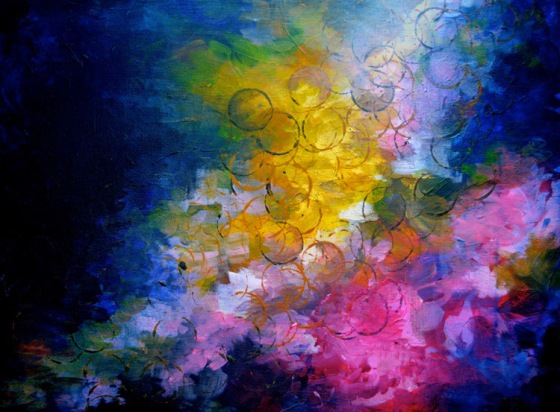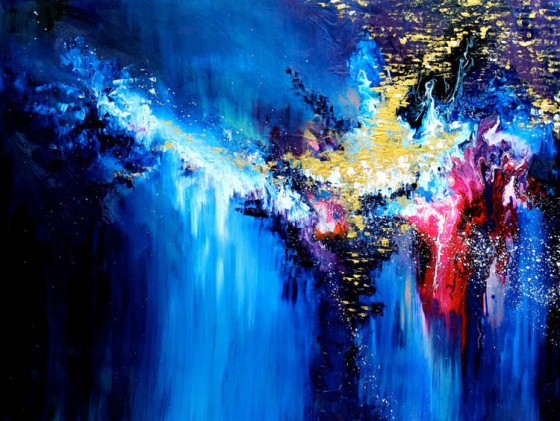Synasthesia is “a neurological phenomenon in which stimulation of one sensory or cognitive pathway leads to automatic, involuntary experiences in a second sensory or cognitive pathway.” Synasthesia’s effects can take many forms. For example, some people with the condition – called synesthetes – may experience letters and numbers or music as having unique colors (grapheme-color synesthesia, chromesthesia, respectively). Less common forms include “tasting” words (lexical-gustatory synesthesia) and “feeling” sounds (auditory-tacticle synesthesia).
It’s probably no surprise that synesthesia is understood to aid the creative process in those who experience it. Missouri artist Melissa McCracken is a perfect example: she “hears” color, and renders her experience into paintings in which she “translates sound into color.” McCracken paints a wide range of songs, from classic rock to jazz to modern electronica. The results are abstract and quite beautiful. I’ve included a few examples here, but you can read about the artist and see more paintings here.
Related links:
– Melissa McCracken’s website.
– Melissa McCracken’s Etsy shop, where she sells prints of her paintings.
– Oliver Sacks’ book Musicophilia.
– NPR story about pianist Laura Rosser, who is a synesthete.



